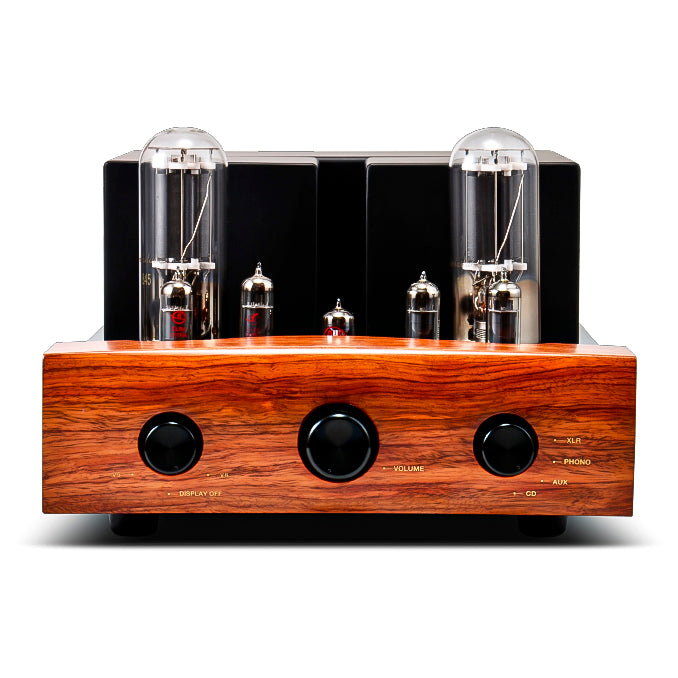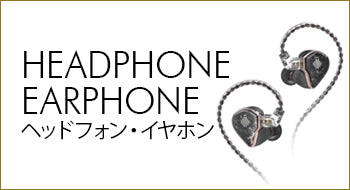Clear and speedy sound
The most naturally spread side curved deflection horn
The FA280A has an external dimension of 806W × 330H × 513D and is a large horn as a wooden cutting horn. Conventional horns have narrow opening dimensions for cutoff frequencies, and most of them have decreased frequency responses at 1KHz or less. However, the cutoff frequency has been set higher than the opening area to improve that part.

In conventional horns, regular numbers of exponential horns were often used for the spread of horns, but in this method, the frequency characteristics near cutoff tended to fall. Therefore, using a hyperbolic horn curve, we succeeded in obtaining almost flat and wide frequency characteristics near the 280Hz of the cutoff frequency. In , by reviewing the horn spread normal number, it can be used from , which is 1.5 times the cutoff frequency.
F280A+TAD4001

F280A+JBL2445J

FA280AThe upper and lower plates are made by shaving out of the extremely large Asada cherry blossom block. One plate weighs about 40 kg. In addition, the side plate is also shaved from 62mm thick composite material, and nearly 100kg per unit is required for total. Since the raw wood is made into a plate-like material and it is made by laminating it, the material of the original raw wood needs nearly 250 kg per horn. This is the maximum as a wooden shaving horn, and because of the shaving out, there is almost no horn buzzing, and a clear playback sound released from the horn that was attached to a large horn is obtained.

In the F280A, laminated boards are used in a longitudinal direction with excellent sound transmission speed. As a result, it achieves a clear sound with good sound dispersion and a sense of speed. Additionally, the internal separator fins are located within the sound path and are thin, which could weaken their strength, raising concerns about resonance. This unit uses very hard and durable African ebony wood, and the separator fins are sandwiched between grooves cut into the upper and lower boards, ensuring sufficient strength despite their thin and sharp design.

Following the shape of a side-curved diffraction horn with internal separator fins, the design has been adjusted to improve vertical directionality by bringing the starting position of the vertical opening closer to the throat, allowing it to gradually open from near the throat. This enables better control of vertical directionality at lower frequencies, resulting in improved frequency characteristics in the mid-bass range and achieving a flatter and smoother frequency response.
A horn gradually amplifies sound waves emitted from the driver unit within the sound path, increasing volume and determining sound direction. Therefore, if there are obstacles or constricted areas within the sound path, reflections can occur, causing sound distortion. This unit does not have any dimensional constrictions at any position within the horn, eliminating distortion due to reflections and achieving an exceptionally smooth characteristic. The directivity of this unit has a moderate width of 90 degrees horizontally and 40 degrees vertically. If the horn's directivity is too wide, it becomes susceptible to reflections in the room. Conversely, if it is too narrow, the direct sound from the horn can become overly strong and harsh. This unit achieves a suitable directivity characteristic that is easy to listen to in a typical listening room.

The FA280A features a throat adapter made of gunmetal with sufficient strength. The internal structure only converts from a round shape with a diameter of 49mm and a length of 60mm to a rectangular shape of 50mm x 60mm. Inside the throat adapter, sound waves are naturally guided into the horn, providing solid support for the connection between the driver and the horn. Gunmetal, an alloy of tin and copper, is known for its high strength and weight, resulting in minimal resonance and beautiful sound quality. The weight of the throat section alone is approximately 4kg. In this model, a support column is erected on the gunmetal throat adapter, and a setting base is placed on both sides of the horn to achieve a stable three-point support during setup. The sound of the horn can change significantly depending on how it is set up. This model reduces the impact of vibrations from the woofer unit on the sound through three-point support, achieving improved sound quality.
| Model | Side curve type diffraction horn |
|---|---|
| Horn cutoff frequency | 280Hz |
| Recommended crossover | 400Hz |
| Directivity | Horizontal 90 degrees, vertical 40 degrees |
| Throat diameter | 4.9cm (JBL/TAD type 2 inches) |
| Compatible units | TAD4001, JBL2441, 2445, etc. |
| Horn material | Asada cherry laminated wood |
| External dimensions | W806×H330×D513mm (including throat adapter) |
| Weight | 39kg |
| Appearance | Rose color, furniture-grade urethane finish (custom colors available on request) |
*Design, specifications, and standards are subject to change without notice for improvement.


































